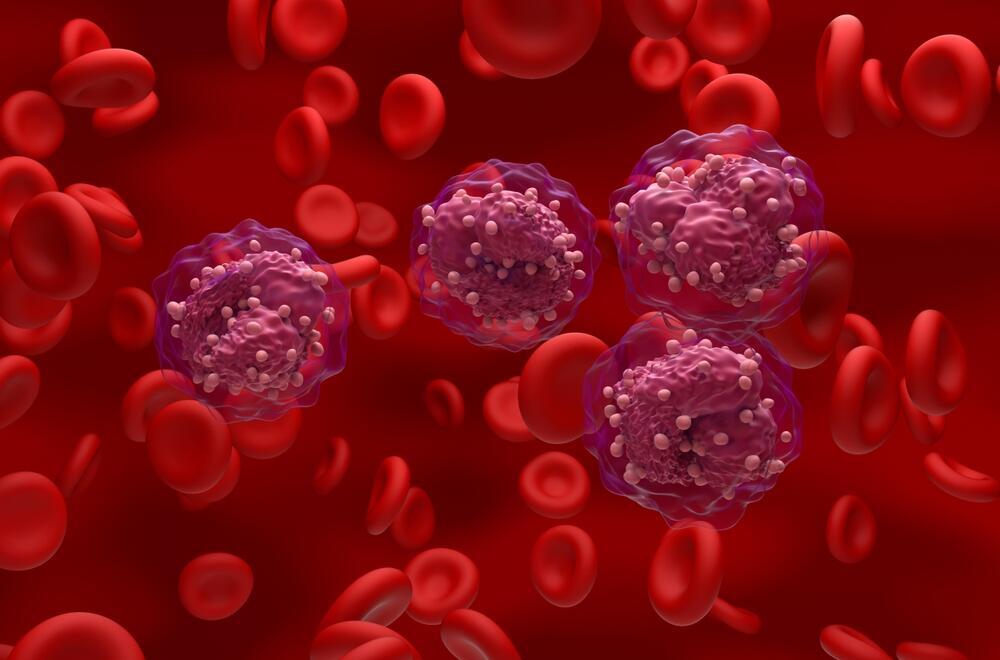Getting your Trinity Audio player ready...
The Syrian Presidential Office has announced that First Lady Asma al-Assad, wife of President Bashar Assad, has been diagnosed with leukemia, five years after conquering breast cancer. Studies show that about 5% of breast cancer survivors may develop secondary cancers, including acute leukemia, later in life. Leukemia resulting from previous cancer treatments can be severe and dangerous.
So, what exactly is leukemia, often referred to as blood cancer? How is it detected and treated? Dr. Noam Benyamini, head of the Hematology Unit at the Baruch Padeh Medical Center, provides some crucial insights.
What is Leukemia?
"Leukemia, or blood cancer, is a malignant disease originating in the bone marrow. The bone marrow produces blood cells, including white blood cells, red blood cells, and platelets. In leukemia, the bone marrow generates abnormal blood cells that multiply and enter the bloodstream, crowding out healthy cells. This weakens the immune system and blood clotting mechanisms, making the body more prone to infections and bleeding—major causes of death in this disease.
"The malignant cells can also infiltrate other organs like the liver, kidneys, brain, and skin, causing direct damage. Leukemia is more common among adults, and its frequency increases with age, though it can also affect younger individuals. The younger the patient, the higher the chances of recovery and the more treatment options available."
What are the Risk Factors?
"Known risk factors include previous chemotherapy and radiation treatments for other malignancies, making individuals who have had cancer and recovered more susceptible to acute leukemia. Other factors include genetic syndromes (such as Down syndrome) and exposure to carcinogenic chemicals like benzene and pesticides.
"Other pre-cancerous conditions that may develop into blood cancer with age include myelodysplasia. In this syndrome, white blood cells do not fully mature, which can evolve into leukemia over the years."
What Types of Leukemia Exist?
"Some are chronic, allowing for long-term treatment and management, sometimes requiring only monitoring. Common chronic leukemias include chronic myeloid leukemia and chronic lymphocytic leukemia, the latter being the most common among adults. Some leukemias are acute, life-threatening, and require immediate aggressive treatment. Common acute types are acute myeloid leukemia (AML) and acute lymphocytic leukemia (ALL).
"Leukemia types are classified based on genetic changes in the cancerous cells. Some subtypes have particularly poor prognoses. One unique subtype is leukemia that develops from previous cancer treatments."
What are the Symptoms?
"Some patients are diagnosed incidentally through abnormal blood tests. Acute leukemia often develops over weeks to months, presenting symptoms like recurrent or severe infections, significant bleeding, and severe anemia (weakness, dizziness, extreme fatigue). Autoimmune phenomena may also occur, mainly in chronic cases. Immediate treatment is required upon diagnosis."
How is it Diagnosed?
"Diagnosis begins with a simple blood test that can reveal cancerous cells. The patient then undergoes various tests, including a more invasive bone marrow biopsy taken from the pelvic bone. Sometimes a lumbar puncture and sampling of cerebrospinal fluid are needed to diagnose cases where leukemia has reached the central nervous system."
How is it Treated?
"Acute leukemia requires aggressive chemotherapy aimed at destroying cancer cells and restoring normal blood cell production. If chemotherapy alone is insufficient, patients may need a bone marrow transplant. This complex procedure suits younger patients in good physical condition and requires a suitable donor, usually a family member or a matching unrelated donor. To prevent transplant rejection, chemotherapy is administered in combination.
"During these treatments, the immune system is compromised, so patients are treated in isolation to reduce the risk of life-threatening infections. If leukemia reaches the central nervous system, chemotherapy is also injected directly into it. Most chronic leukemia treatments are biological and involve taking pills."
Developing Leukemia After Breast Cancer: How Common Is It?
"Leukemia that develops after chemotherapy treatments, usually acute myeloid leukemia (AML), is life-threatening. About 6-10% of AML cases appear in patients who previously underwent chemotherapy. About half of these cases are in patients treated for breast cancer or lymphoma.
 Dr. Noam BenyaminiPhoto: Baruch Padeh Medical Center
Dr. Noam BenyaminiPhoto: Baruch Padeh Medical Center"Research shows that about 5% of breast cancer survivors may develop secondary cancers, including acute leukemia, later in life. Studies also indicate that women who underwent breast cancer treatment have a 2.56 times higher risk of developing AML. This is likely due to the high prevalence of breast cancer.
"Survivors of cancer are monitored for recurrence or spread of the disease and undergo additional tests to diagnose secondary cancers like leukemia. The main reason for the increased incidence of acute leukemia in these patients is the genetic damage caused by chemotherapy to bone marrow cells. Several years after treatment, the cells with genetic damage can develop into pre-cancerous states and leukemia."
Is Treatment Different for Those Who Previously Underwent Chemotherapy?
"Not fundamentally, but the prognosis tends to be worse, meaning the recovery outlook is lower. Therefore, more intensive treatments are required, and the likelihood of needing a bone marrow transplant is particularly high, depending on the patient's age, physical condition, and responses to initial treatments."



